#Whitney Bauck
Text
Bats Are In Trouble. That’s Not good For Anyone Who Likes Mezcal, Rice or Avocado
Some of Our Favorite Foods and Drinks Rely on These Oft-Misunderstood Mammals, Which are Facing Multiple Threats
— By Whitney Bauck | Thursday 21 March 2024
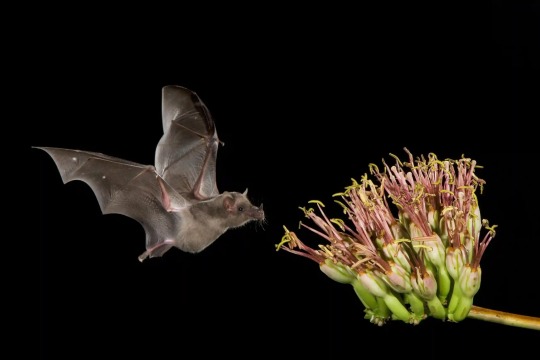
A Mexican long-tongued bat approaches an agave blossom in Tucson, Arizona, in 2006. Photograph: Rolf Nussbaumer/Alamy
If You’ve Ever Enjoyed Coffee ☕️, Tomatoes 🍅, Corn 🌽, Bananas 🍌, Mangoes 🥭, Walnuts, Chocolate 🍫, Tequila 🍺 or Mezcal, You May Just Owe Bats a Thank-You.
While bats are often the subject of fear and scorn – they’re fixtures in Halloween decor and haunted-house imagery, and are frequently portrayed as harbingers of doom – their presence is often a sign of a thriving ecosystem. Some of our favorite food and drinks would be much less plentiful, or even nonexistent, without them.
Bats play a few significant roles in human food systems. Some serve as a form of natural pest control by feeding on insects that can destroy crops like corn and pecans. Others pollinate species like bananas, coconuts, avocados and agave, a role many people associate with bees and butterflies. And some fruit-eating bats help maintain wild plant populations through seed dispersal – think mangoes, cashews, figs and almonds.

Bats fly out of a cave at sunset to feed in Ratchaburi, Thailand, on 12 September 2020. Photograph: Lauren DeCicca/Getty Images
Despite all the ways that bats help ecosystems thrive, “they often get forgotten” in conservation conversations, and in people’s estimations of what it takes to maintain sustainable food systems, said Kristen Lear, who works at Bat Conservation International. Whether it’s because we just don’t notice bats (as nocturnal animals, they’re certainly not easy to observe) or because we tend to associate them with dark and spooky things, bats are rarely championed. But as threats from habitat destruction, disease and climate change mount, it’s time that changed.
No Bats, No Tequila
Most of the time when you order a margarita, you probably aren’t thinking about bats – but maybe you should be. Tequila is made from agave, and agave plants have long relied on bats for both pollination and seed dispersal.
The Mexican long-nosed bat, which has co-evolved with agave for millions of years, is a fuzzy little gray-brown creature that uses its 3in-long tongue to slurp nectar from agave flowers that bloom at night. This migratory species travels from west Texas and south-western New Mexico down into Mexico each year, keeping pace with the blooming periods of agave and flowering cacti.
But as demand for tequila and mezcal – another spirit made from agave – has grown, the plant is increasingly being harvested at scales that put these migratory bats at risk. After having been appreciated in Mexico for hundreds of years, agave-based spirits are becoming increasingly popular abroad, and nowhere are they more sought-after than in the US, where about 80% of the world’s tequila is sold.
“Agave spirits from Mexico are very trendy now. Probably that trend started 10 years ago, but in the last four or five years, it has been intense,” said Diana Pinzón, a forestry engineer who works with small-scale mezcal producers. “It’s a big problem for agaves endemic to Mexico, and for the bats and all the biodiversity around the ecosystems where the agaves grow.”
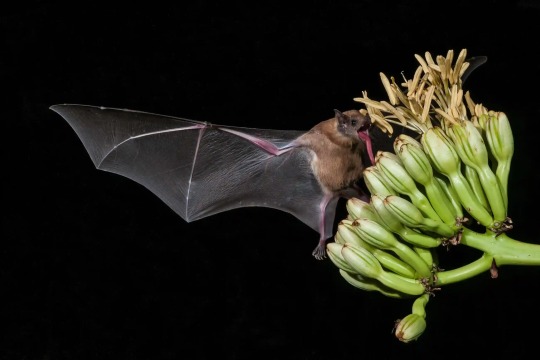
A bat feeds on agave blooms in Green Valley, Arizona, in 2012. Photograph: Michelle Gilders/Alamy
US thirst for agave-based spirits, and the money that can be made from selling them, is driving growers to harvest at a scale and in a manner that’s not sustainable long-term, according to Pinzón. In many places, agave plants are chopped down before they’ve had time to bloom, leaving bats that rely on the flowers’ nectar with one less food source.
Producers can grow new agave by working with “baby” shoots sent out by parent plants, but without bats cross-pollinating them, the new plants are all clones and lose genetic diversity over time. Pinzón fears this will make the plants less resilient in the face of climate threats and extreme weather.
“These two species evolved together for the last 10m years. If you lose one, you lose the other,” she said.
Pinzón is building a small-label brand called Zinacantán Mezcal with a fourth-generation agave grower who leaves 20% of the crop in the field for the bats, and believes that limiting the amount of production of agave-based spirits is the only path forward for any legitimate claim to sustainability.
“The demand is like cars in the city. If you build a new freeway [to fix traffic], more cars will just end up on the road,” she said. “So the [agave] projects need to put limits and say: ‘OK, we can make that quantity [of spirits] every year and no more.’ We need to recognize and take action to mitigate our ecological impact.”
The Bug-Eaters
Troy Swift has been farming pecans in Texas since 1998, but hadn’t thought about building bat houses near his orchards until recently. He was first inspired when Merlin Tuttle, a legendary bat conservationist, visited his farm and suggested it. “He said: ‘Troy, with the biodiversity you have here, you really might want to consider using bats as part of your pest-control program,’” Swift recalled.
It wasn’t long before Swift started building his own bat houses. Within six months, bats had moved in. He now has 17 bat houses on his property, and is working with Tuttle’s organization to quantify the impact that the bats have on his crop. Together, they’ve used echolocation technology and guano (bat dropping) DNA sampling to learn that there are at least seven species of bats living on Swift’s farm. They also found that over the course of six weeks, the bats had eaten more than 100 species of insects.

A bat flies over water in 2022. Photograph: Paul Colley/Getty Images/iStockphoto
They’re still trying to gather enough data to prove whether or not the bats are helping control the specific pest insects that eat pecans, but having found that the bats eat mosquitoes, flies and pests that bother livestock is already enough to convince Swift that bats have a role to play on farms.
“What we’re trying to do is leverage the use of bats into all agriculture and teach farmers that these bats are really your friends,” Swift said.
Other studies have already concluded that bats are providing farmers free pest-control services, whether they know it or not. Bats save more than $1bn a year in crop damage and pesticide use in the US corn industry, and more than $3bn a year across all agricultural production, according to Jade Florence, a biologist at the US Fish and Wildlife Service, who has worked on bat conservation efforts.
Simply having bats around, even when they’re not feeding, helps keep pests under control, according to Lear of Bat Conservation International. “The mere presence of bats in agricultural fields can actually suppress the activity of those insects,” she said.
How To Help Bats Under Threat
For all the good they do for food systems, bats face numerous threats. “Many species around the world, including here in the US, are undergoing some sort of habitat loss, whether that’s disturbance to their roost sites in caves or mines or trees, or loss of foraging habitat – loss of forests or agricultural areas that have healthy insect populations,” said Lear. Other threats include the extreme weather caused by the climate crisis and diseases like white-nose syndrome, a fungal disease that has decimated North American bat populations.
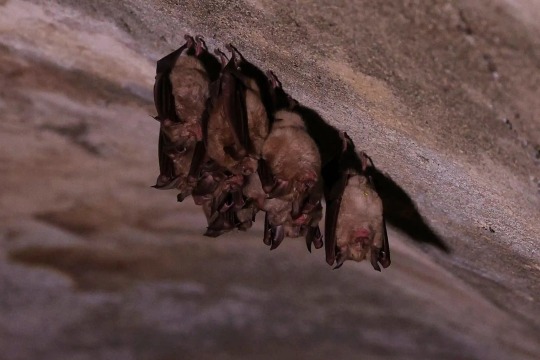
Bats hang from the ceiling of a tunnel in Tirana, Albania, on 15 March 2023. Photograph: Franc Zhurda/AP
So what can be done? Lear has been working on a project with 60 partners across the US and Mexico to plant 115,000 agave plants in the Mexican long-nosed bats’ migratory path. Her organization recommends exploring nature responsibly (for example, respecting cave closures in order to not expose bat populations to new pathogens), protecting old trees that can serve as bat roosts, keeping cats indoors where they can’t harm bats and providing a water source in arid environments.
People who want to go one step further can build or buy a bat house and plant a bat-friendly garden with some native night-blooming flowers to attract nocturnal insects that bats can feed on. (Besides having a positive ecological benefit, “it’s just fun” having bats around, said Swift, who loves watching them emerge at dusk to hunt insects.)
But Lear said you can also help by doing something even simpler: talking about bats and why we need them. “The more we have people doing that to their friends and families, the more it will take root in their brains,” she said. “Over time, that will help gain public support for bat conservation.”
#Wildlife | Our Unequal Earth | Food (Environment) | Animals | Agriculture | Farming#Food (Global) | Food 🍲 🍱 🥘 & Drink 🍺 Industry | Features#The Guardian#Whitney Bauck
0 notes
Photo

‘Extrapolations’ is the climate TV show we’re finally ready for
Apple TV's sprawling series depicts the "messy middle" of climate change.
https://grist.org/culture/extrapolations-climate-change-tv-show-apple/
0 notes
Photo

Read Whitney Bauck and Madeleine Jubilee Saito from our NATURE issue: Do you ever think about the ground beneath your feet?
346 notes
·
View notes
Photo

Whitney, 26
“I’m wearing Veja sneakers, Eckhaus Latta socks, Petit Kouraj bag, Svnr dress, Jungmaven naturally dyed hemp tee, and Svnr earrings. My style is inspired by my drive to participate in the fashion industry in a way that pushes us to more socially and environmentally responsible practices.”
Sep 9, 2019 ∙ Tribeca
#street style#street fashion#new york fashion week#nyfw street style#whitney bauck#unwrinkling#nyc looks#sustainable fashion#veja sneakers
398 notes
·
View notes
Text

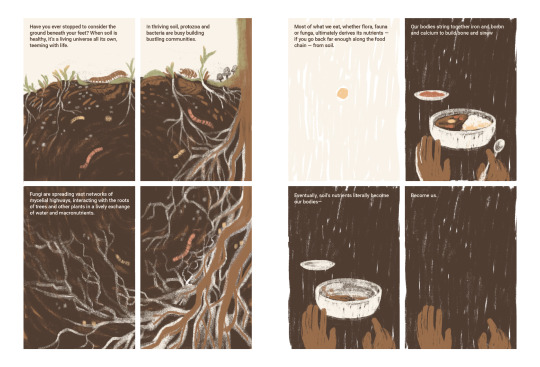
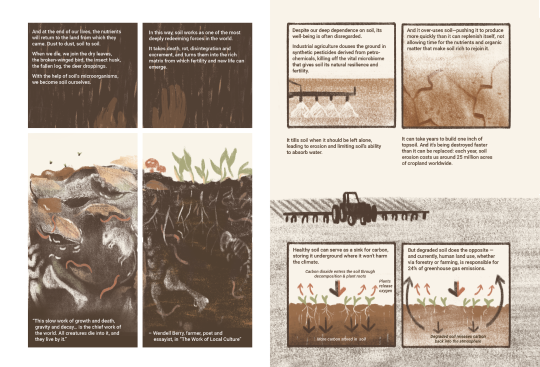
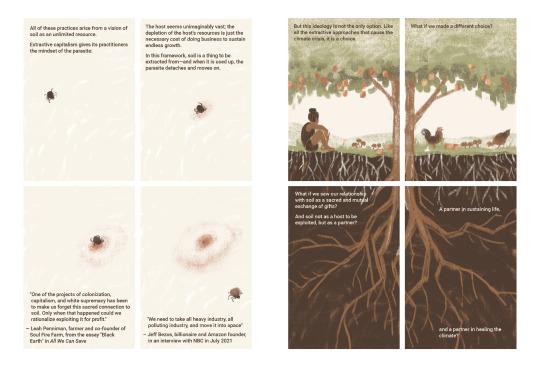


New comic up on the nib!
co-created by me (Madeleine Jubilee Saito) and amazing climate journalist / soil nerd Whitney Bauck 🤎
2K notes
·
View notes
Link

By BY WHITNEY BAUCK from Style in the New York Times-https://www.nytimes.com/2021/04/26/style/preachers-n-sneakers-book.html?partner=IFTTT
Also a new book that examines the relationship between spirituality and stuff. Here’s what to expect.
The Preachers ’n’ Sneakers Trend is Alive and Well and Spawning Merch New York Times
0 notes
Photo

14 of the Best Resources for Becoming A More Ethical (and Educated) Fashion Consumer / Whitney Bauck / Fashionista 14 of the Best Resources for Becoming A More Ethical (and Educated) Fashion Consumer - Fashionista Wonderful post from Whitney Bauck for Fashionista.
0 notes
Photo

"Did Your Handbag Help Destroy the Rainforest?" by BY WHITNEY BAUCK via NYT Style https://ift.tt/XRdKWef
0 notes
Text
迎戰四星期的時裝週馬拉松,時尚編輯公開她們的必備清單!

時尚編輯就是穿著光鮮新裝,出入各大時裝展與人寒暄?這樣想就太低估他們的工作量了,隨著 #NYFW 和另外三大時裝週的展開,時尚編輯也迎來了一年最忙碌的時候。隨了邀請函和紀錄重要時刻的手機之外,還有哪些物品會伴隨他們馳騁各大時裝展呢?
1. 舒適的鞋履

Alyssa Vingan Klein 表示為了一張不知會否面世的街拍,穿著高跟鞋弄出水泡來是絕不值得的。因此她的最佳盟友是 adidas 的球鞋。而 Tyler McCall 也認為要在時裝秀之間行走,必須帶備一雙舒服的鞋子。不過這不代表要穿沉悶的款式,她舉出 Kate Spade 的低跟瑪麗珍鞋,不難想像她總以甜美又復古的造型現身時裝週。
2. 實用為上的手袋

Maura Brannigan 透露她不能沒有 Haerfest Agnes 復古皮革包,可想而知時尚編輯要帶備的東西不少,太迷你的 clutch怎能裝得下邀請卡、手機、充電器⋯⋯呢?而 Maria Bobila 則更要迎合潮流,她首選是容量大的 PVC 塑膠手袋,找起東西來也特別方便!
3. 急救護膚品

再隨意也畢竟是出席時裝週,又怎能以一雙千年黑眼圈、一頭亂髮露面?美容編輯 Stephanie Saltzman 便必要帶上滾珠眼霜,以確保沒人看出她睡眠不足。Tyler McCall 更聰明地帶上頭髮乾洗噴霧(Dry shampoo),再倦也可保持整潔精神的模樣。她們不約而同都指出防曬十分重要,手袋必定為它預留位置。而 Maura Brannigan 還堅持帶上 Origins 的清潔面膜,像 #NYFW 這些大日子絕對少不了它。
4. 一根完美唇膏

好氣色對於時尚達人來說十分重要。有趣的是,她們沒有提到粉底、眼影、遮瑕⋯⋯而是提到了唇膏。Whitney Bauck 指她有次十分匆忙,拿起 Nars 的唇筆在地鐵中也能完成妝容。
5. 一件流行單品

這大概是為了街拍照而預備吧,用一件當季流行單品,來彰顯自己敏銳的時尚觸覺。Maria Bobila 選擇的是豹紋絲裙,她還說會以白襯衫和球鞋來配襯它。有人則以碩大的扣針耳飾來點綴造型,還有很貴氣的絲絨束繩包也是她們的加分配飾。
延伸閱讀:
時尚界盛會 #NYFW 即將展開了,解密 11 條行家才知道的「時裝週潛規則」!
預測時裝週流行趨勢:這 12 個單品被搜尋最多次!
用鏡頭紀錄時尚:她不是設計師或模特,卻是時裝天橋上的靈魂人物
從時裝週大批 Off Duty Models 捕捉:令人好奇的新加坡「缺陷美超模」
Follow us on Facebook: fb.com/POPBEE
Follow us on Instagram: Instagram.com/POPBEE
1 note
·
View note
Photo

Stretch and Share: Get to Know Senior Sustainability Reporter Whitney Bauck
0 notes
Text
How Margiela — and Instagram — Have Inspired John Galliano to Let Go
One of fashion’s most intriguing figures talks about starting over without forgetting the past
fashionista.com I by Whitney Bauck, on 16 October 2017
John Galliano has a complicated relationship with the past. On a professional level, he’s somewhat haunted by it: The explosive ups and downs of his own career have played out so publicly that they’re never far from mind, even as he’s consistently recognized as one of the visionary designers of his generation. On a personal level, though, he’s always been interested in history, combing archives and researching deeply for inspiration that might inform his own design process.
Ever since he took over as creative director at avant-garde fashion house Maison Margiela, the complexity of Galliano’s relationship with what went before him has only deepened.
“I was trying to bring a new genetic into the existing DNA of Maison Margiela,” Galliano said to Andre Leon Talley at Vogue’s Forces of Fashion conference on Thursday. It was this desire to honor the old while ushering in the new that led to Galliano’s focus on the idea of décortiqué. “[It’s] this idea of bringing things down to the memory of what they were,” he explained. “I started to take parts of my menswear wardrobe down to the skeleton and then layering that over things to reveal and non-reveal.”
He thinks about the process of taking over the atelier at Margiela in a similar way, describing his need to disassemble certain structures in order to preserve the overall essence of the label. In the context of Margiela, this meant hiring some new staff and watching others depart, in addition to rearranging the offices so that his own workspace would be on the same floor as the atelier to facilitate more direct and regular interaction.
Much of this approach traces back to advice he received at the six-hour tea party he had with the elusive Martin Margiela himself — the only meeting to date between the two — just before Galliano stepped into his current role.
“He wanted to meet, so we met, and that was the most amazing, amazing thing,” Galliano said. “He remembered me and said we’d hung out in clubs and stuff in London, but I have no recollection,” he added with a laugh. While Galliano loved learning about Margiela’s preoccupation with 17th-century French literature and 18th-century costuming, the best thing he walked away with was the advice that still guides him: “Take what you will from the DNA of the house. Protect yourself. And make it your own.”
On the runway, that’s meant introducing techniques that Galliano is known for — like cutting fabric on the bias — and applying it to new materials, like tweed. He’s also enjoyed submitting himself to design motifs the house has long capitalized on, like deconstruction, and learning new ways of operating as a result.
“I was obsessed with perfection and polish [before], and at Maison Margiela I’ve discovered the joy in the unfinished,” Galliano said. “It’s helped me to perhaps loosen my control.”
Seeing the “Instaglam” way that kids dress on the internet has highlighted the importance of letting go, too.
“It’s more spontaneous, I find, than when we were dressing up as kids and we’d spend three days getting ready. They’re less precious about it,” he said of the ‘grammers he follows these days. “They don’t really care if David Bowie wore those trousers in 1972 and they were worsted and cut by Tommy Nutter. No. The image: it either speaks to them or it doesn’t.”
All in all, whether he’s looking to vintage Madeleine Vionnet photographs or today’s club kids for inspiration, Galliano’s mostly just glad he’s still in the business he loves. He says there was a point after being fired from Dior and his own label in 2011 where he wondered if he’d be stocking shelves for the rest of his life.
“I had to do the work I had to do, and I am so grateful for that time that I spent on my own,” he says of his hiatus. “The joy of creativity is what pulled me through and is why I’m here today.”

Photo credit: Corey Tenold/Vogue
Taken from fashionista.com
#John Galliano#Galliano#Margiela#Martin Margiela#Maison Margiela#Maison Margiela by John Galliano#fashion#Fashion event#Vogue#forces of fashion#American Vogue#Vogue US#fashion designer#designer
14 notes
·
View notes
Text
Works Cited
Bauck, Whitney. “How Petra Collins Went From Failing High School to Photographing For Gucci.” Fashionista, 1 Mar. 2017.
Dazed. “Petra Collins.” Dazed, 8 Feb. 2016.
Dolski, Megan. “Petra Collins Turns the Lens on Own Family for Toronto Show.” Thestar.com, 6 May 2017
Felsenthal, Julia, and Petra Collins. “Petra Collins Remixes Georgia O'Keeffe for the Tate Modern.” Vogue, Vogue, 25 May 2017.
Petra Collins, www.petracollins.com
2 notes
·
View notes
Text
Fashionista Editors Reveal Their Fashion Month Essentials

February has arrived, signaling the start of fashion's winter games — otherwise known as fashion month. In the coming weeks, our small — but mighty — team will scour the streets and studios of New York City, London, Milan and Paris to bring you all of the Fall 2020 trends, collection highlights, backstage beauty tips and industry rumors from the front lines. Though typically sleepier and snowier than the spring shows in September, our schedules this season leave little room for relaxation. But Fashionista editors have been around the fashion month block more than a few times, so each one has curated a list of must-haves that she couldn't imagine getting through four-plus weeks of shows without. Read on to browse (and shop!) them all. Tyler McCall, Editor-in-Chief 6 Gallery 6 Images Ana Colón, Senior Editor 5 Gallery 5 Images Stephanie Saltzman, Beauty Director 7 Gallery 7 Images Whitney Bauck, Senior Sustainability Reporter 5 Gallery 5 Images Dara Prant, Market Editor 5 Gallery 5 Images Please note: Occasionally, we use affiliate links on our site. This in no way affects our editorial decision-making. Sign up for our daily newsletter and get the latest industry news in your inbox every day.
0 notes
Link
Dear Fashionista: What's the most responsible way to dispose of shoes once they're worn past the point of no return? I don't want them to end up in a landfill, but I know I can't just put them out on the curb with my cardboard and glass for recycling.Perhaps your soles look like Swiss cheese or your high heels are so chewed up you're telling people the dog got ahold of them. If it's time to retire your loved-to-death footwear and you're looking for responsible, sustainable ways to do so, there's good news and bad news: You have options, but none of them are perfect. Of the 24.2 billion pairs of shoes manufactured globally each year, experts say that most of them end up in a landfill or incinerator, because there are simply too many shoes and not enough recycling solutions. "When you are generating this much product, most of it is sent back to landfill," says Dr. Sahadat Hossain, the director of the Solid Waste Institute for Sustainability at the University of Texas at Arlington.Still, you're right to resist the urge to toss shoes in the garbage. Once they're kicking back in the dump, shoes can leach plasticizers, heavy metals and other toxic chemicals, says Hossain. They also take a literal eternity to break down. While natural materials decompose quickly (cotton takes about six months while leather requires 20 to 40 years), most of our shoes contain plastic-based components that last much, much longer. "PVC and EVA are around 35% of all shoe materials, globally," explains Hossain. "They can take as much as 1,000 years to decompose." Of course, this is all theoretical, he adds. In modern landfills, which are lined in plastic and then sealed shut, our shoes sit intact "as long as you can imagine.
"WHEN IN DOUBT, DONATE
The simplest advice is to donate used shoes. "Worn out to you doesn't necessarily mean worn out to someone else," says Tiffany Fuller, a deputy director of Reuse, Special Waste and Apartment Programs at the New York City Department of Sanitation.
In fact, according to the American Apparel and Footwear Association, we buy more than seven pairs of shoe per year, the equivalent of one new pair every seven weeks. Purchasing at this clip means that most of our shoes never truly get the chance to wear out. And reusing is better for the environment than recycling.
By donating, shoes will likely find their way to emerging nations (charities sell about 25% of what we donate locally and export the rest), some of which boast a thriving market for worn and even refurbished footwear.
"Some of them get washed and cleaned and, if need be, the heel is replaced," explains Steven Bethell, founder of Bank & Vogue, a global used clothing broker. In Guatemala, there's a sneaker cleaning plant, says Bethell, while in Pakistan men's dress shoes get resoled in large recycling facilities. If you're wondering if your shoes are fit to be reworn, Bethell's advice echoes Fuller's: "When in doubt, donate."
There's one major caveat with donating: Not all footwear will find a new home and developing countries are filled to the brim with our old stuff.
"There is greater supply than there is demand," says Liz Ricketts, co-founder of the OR Foundation, a non-profit that researches the secondhand industry in Ghana. In Ghana, she says, as much as 40% of clothing imported from the West is directly landfilled or burned. She suspects the percentage is even higher with footwear.
Still, Bethell says there are ways to boost the chances that your shoes will make the cut. Sneakers (both men's and women's), soccer shoes and men's dress shoes are most in demand in the international secondhand trade and are good options to donate. Fashionable women's shoes, on the other hand — especially high heels — are a "dime a dozen" and are a better option to repair and resell at home.
An Under Armor shoe sitting atop the Fairless Landfill in Pennsylvania.
Photo: Whitney Bauck/Fashionista
IF THEY CAN'T BE SAVED, SEE IF THEY CAN GET NEW LIFE IN ANOTHER FORM
If your shoes are truly beat and you can't fathom another person loving them — a good rule of thumb is that if the uppers are still in good condition, the shoe can have a second life — toss them into a recycling bin instead of the trash. Footwear recycling is not nearly as common as clothes recycling (apparel can be shredded and turned into new fibers or insulation, for example), because shoes are more complex. However, there are a handful of programs attempting it. And the options are expected to grow in the next few years.
Nike's Reuse a Shoe program, running since 1993, recycles worn out sneakers by any brand. They've processed 33 million pairs of shoes to date. After separating the shoes into leather, foam, plastic and rubber, the pieces are ground down and reused as surfacing for playgrounds, track tops, carpet padding and even new Nike gear, like maybe the soles of your Air Jordans. You can get in on the action by dropping your shoes at participating Nike and Converse Factory stores (here's a list of them).
You can also take beat-up shoes by any brand to Columbia stores and participating Asics stores (here's a list). These in-store take back programs are run by I:CO, a global waste handler whose parent company opened the world's first industrial-scale shoe recycling facility in 2018, which is working to find solutions for any kind of shoe waste, according to a company rep via email. Recently I:CO partnered with Adidas to turn bits of rubber from running shoes into rugs, for example.
Another option is to organize a shoe drive and send what you collect to Terracycle, a New Jersey-based recycler that finds buyers for leather shoe bits that can to be turned into flooring and furniture, while plastic becomes containers and soundproofing materials, among other uses, says Ernel Simpson, VP of research and development. But you'll have to pay for it. Collection boxes start at $109, making it a better option for offices, apartment buildings or schools.
Fortunately, footwear recycling options should expand in the near future.
"We are looking at shoe to shoe to recycling. Conceptually it's a new way of looking at things," explains Dharan Kirupanathan, technology lead behind Adidas's Futurecraft.Loop, an allegedly "infinitely recyclable" running shoe made of a single material that's currently in its pilot phase. And I:CO is planning to expand its footwear recycling options to more stores and brands in 2020.
THE BEST SOLUTION OF ALL? KEEP THEM KICKING
Before you act on any of the above, take a second look at the shoes in question. Chances are that your shoes aren't actually on death's door and could be brought back to life. In fact, there's almost no such thing as a worn-out shoe in the hands of a good cobbler.
"We can fix everything," says Jair Antonio Hernandez, owner of J&C Shoe Repair in Brooklyn, who has 48 years of experience and happens to be my personal cobbler. Many cobblers will take on unusual repairs, like replacing the cork on Birkenstocks, shampooing and reconditioning Uggs and rejuvenating your sneakers, too.
"We can do full resoles on sneakers, new heels and change the color," says Hernandez. Repairing truly worn-out shoes is more expensive, he adds, so next time, don't wait so long.
If you don't have shoe repair nearby, try an online shoe repair service, like My Shoe Hospital, NuShoe or Cobbler Concierge. Jersey-based SoleFresh has a mail-in option for sneakers. If you've bought a pair of high-end shoes (like Red Wing), check if the company provides in-house repairs.
You can also try your hand at some DIY shoe recovery at home. Shoe adhesives like Shoe-Fix, Barge and Shoe Goo are cheap and effective and can be used to plug holes in those paper-thin soles, reattach a flopping sole and — my favorite trick — build up a worn-down heel so you're not walking at a slant.
THE FUTURE OF FOOTWEAR
Luckily, the shoe industry is working on new ways to help curb this cycle of waste — and make it simpler to part with shoes without all the guilt. From upstarts like Veja and Everlane to industry stalwarts like Adidas, Nike, New Balance, Converse and Saucony, more footwear companies are moving towards non-toxic, biodegradable and recycled components. It's also easier than ever to give a pair of shoes a second life by listing them on resale platforms like TheRealReal, Depop and ThredUp or on sneaker trading platforms like Sole Supremacy, StockX and Fight Club.
At the end of the day, there's no magic bullet solution to getting rid of old shoes. Like everything else to do with sustainability, it's complicated and requires tradeoffs. And even recycling innovations can't replace the time-tested advice to buy the best quality shoes you can afford (leather still lasts the longest and is easiest to repair, says Hernandez) and to care for each pair as long as possible. Once you're past that point? It's worth remembering that old shoes also make great flower pots.
Got a sustainability question of your own? Submit it with "Ask a Sustainability Expert" in the subject line to [email protected] and we'll see if we can help answer it.
#recycle sneakers#sneakerheads#sneakercommunity#sneaker blog#nike sb dunks#nike sneakers#adidas originals#Reebok Answer V Mu X Atmos#stock x#thread up#converse
0 notes
Text
Designer kombinieren ihre Einzelhandels- und Studioräume
https://de.bufinans.com/designer-kombinieren-ihre-einzelhandels-und-studioraume/?wpwautoposter=1559706337
Designer kombinieren ihre Einzelhandels- und StudioräumeGeschäftsideen - Bufinanshttps://de.bufinans.com/designer-kombinieren-ihre-einzelhandels-und-studioraume/?wpwautoposter=1559706337 Null Abfall Daniel. Foto: Mit freundlicher Genehmigung von Zero Waste Daniel von Aidan Loughran Der Ruf nach Transparenz in Mode klingelt lauter als je zuvorund Marken verfolgen verschiedene Ansätze, um darauf zu antworten. Einige sind Offenlegung ihrer LieferkettenEinige bieten einen Blick hinter die Kulissen der Produktion und KostenaufschlüsselungenUnd einige Marken legen buchstäblich alles auf den Tisch – das heißt den Schneidetisch. Der Aufstieg der Kombination von Studio- und Einzelhandelsstandorten war ein langsamer, aber stetiger Branchentrend 3×1 Denim's Einzelhandelsgeschäft / Denim Atelier Hybride in New York Citys SoHo macht 2009 den Auftakt zu Teressa Foglia's Industriestadt studio-meets-showroom, der im Dezember 2017 eröffnet wurde. Danke fürs zuschauen!Besuche die Website Ähnlich dem populären Konzept von offene Küche Restaurants In der kulinarischen Welt haben Designer beschlossen, den Vorhang für die Gestaltung ihrer Entwürfe zurückzuziehen, indem sie ihren Kunden einen Einblick in den Prozess gewähren. In der Modebranche gibt es keinen offiziellen Namen für diese Art von Raum, aber Daniel Silversteins "make / shop" in Brooklyns Williamsburg scheint es ziemlich gut zusammenzufassen: Sein Label Null Abfall DanielWie der Name vermuten lässt, handelt es sich um eine Marke, die keine Abfälle aus ihren Produkten erzeugt, und die Fokussierung des Designers auf jeden Schritt des Designprozesses kann unter einem Dach erfolgen. Danke fürs zuschauen!Besuche die Website Danke fürs zuschauen!Besuche die Website In Verbindung stehende Artikel8 Fashion- und Beauty-Redakteure über die Auswirkungen ihrer Arbeit auf ihre Karriere Wie Modemarken eine nachhaltigere End-to-End-Einzelhandelswirtschaft schaffen könnenKönnte Tiffany & Co. den Ausschlag für eine transparentere Diamantindustrie geben? "Meine Produktion und meinen Einzelhandel zusammen zu lokalisieren, spart Zeit und Energie und ermöglicht es mir, jeden Tag zu maximieren", sagt Silverstein. "Ich kann auch die Produktion, den Kundenservice und kleine Details, die für mich als Designer und als Marke wichtig sind, genauer im Auge behalten. Ich kann sowohl meine Arbeit als Designer erledigen als auch mit Kunden interagieren und jedem zeigen, der an Null zweifelt Abfall und dass meine Arbeit in der Tat aus Schrott besteht. " Für Scott Morrison, den Gründer von 3×1, entstand die Idee, den Einzelhandelsstandort und das Atelier der Denim-Marke zu kombinieren, als er feststellte, dass die meisten Leute nicht verstehen, wie Jeans hergestellt werden. "Ich dachte, wenn wir einen Weg finden könnten, den Prozess zu veranschaulichen, könnte dies eine wirklich beeindruckende Erfahrung für die Menschen sein", sagt er. Infolgedessen wurden Nähmaschinen hinter Glaswänden des SoHo-Flaggschiffs der Marke positioniert, wodurch das entstand, was Morrison als "Disneyland of Denim" bezeichnet. Rolls aus Webkanten-Denim neben einem Regal mit käuflichen 3×1 Stücken. Foto: Whitney Bauck / Fashionista Und obwohl die Verschmelzung von zwei Räumen in gewisser Weise eine Geldersparnis sein mag, merkt er an, dass sie für die Innenstadtlage immer noch einen hohen Preis zahlen. "Es ist nicht einmal so kostengünstig, aber unsere Kunden schätzen die Magie, den Prozess direkt vor Augen zu haben", sagt Morrison. "Wenn Sie in diese Erfahrung einbezogen werden, bekommen Sie einen Sinn für einen Luxusartikel." Heute werden am SoHo-Standort von 3×1 jedes Jahr etwa 2.000 Paar Jeans produziert – von Mustern über Sonderanfertigungen bis hin zu maßgeschneiderten Jeans -, während der Rest der regulären Großhandelskollektion bei einem separaten Hersteller in Los Angeles hergestellt wird. Die Designerin Ellie Mae Waters hatte nicht die Absicht, ihren in Toronto, Kanada, ansässigen Studio- und Einzelhandelsstandort zu fusionieren, in dem die Stücke für ihre namensgebende Marke untergebracht sind Ellie Mae Studios. (Die einzigen Artikel ihrer Marke, die nicht im eigenen Haus hergestellt werden, sind aus Peru ausgelagerte Strickwaren.) "Als ich den Raum zum ersten Mal fand, wollte ich, dass er das Designstudio und nicht das Einzelhandelsgeschäft ist", erinnert sich Waters . "Aber von dort aus haben wir gerade angefangen, das Geschäft auf beiden Seiten zu leiten." Dies war nicht immer der Fall: Die Marke begann als Großhandelsunternehmen, das größere Stückzahlen und ein höheres Produktvolumen forderte. Aber als Waters beschloss, ihre Firma direkt an den Verbraucher zu liefern, fragte sie sich, warum sie anderen Menschen vertrauen würde, wenn sie ihre Stücke herstellten. "Unsere größte Hürde bei der Zusammenarbeit mit Herstellern in Kanada bestand darin, dass wir uns immer für eine große Auflage engagieren sollten", sagt Waters. "Ivy und Sandy, unsere Näherinnen, haben die Geduld und die Zeit, um sicherzustellen, dass jedes Stück unseren Standards entspricht." Foto: Mit freundlicher Genehmigung der Ellie Mae Studios Zusätzlich zu dieser kombinierten Fläche hat Waters die Ellie Mae Studios nach Stackt gebracht, einen kulturellen Marktplatz in Toronto, auf dem Marken in alten Versandbehältern einen Pop-up-Shop einrichten können. Waters merkt an, dass der Fußgängerverkehr an diesem Ort stärker ist, da Kunden durch eine Vielzahl von Marken auf einmal schlendern und einkaufen können. Dies kann jedoch auch diejenigen anregen, die vorbeischauen, um ihre Ladenfront zu besuchen. Während auf einer kleinen "Pause vom Leben" in Südfrankreich, Teressa Foglia nahm an einem Hutmacherkurs teil und ihre Kreationen spornten Anfragen von Freunden an. Nach seiner Rückkehr nach New York und der Suche nach Atelierplätzen in Bushwick in Brooklyn und Tribeca in Manhattan schien Foglia keinen geeigneten Ort zu finden. Ein Freund erzählte ihr davon Industriestadt-StudiosEntlang der Uferpromenade von Brooklyns Sunset Park ließ sie sich schließlich an einem Ort nieder, an dem sie anfing, Vintage-Hüte zu radeln, bevor sie sich ihre eigene machte. Benutzerdefinierte Hüte sind das A und O von Foglia, und sie bietet an, Kunden in ihr Studio einzuladen, um ein Teil der Erfahrung zu sein. "Wir werden emotional mit unseren Kunden verbunden und wenn jemand in den Laden kommt, gehe ich mit einer neuen Freundin", sagt sie. "Durch die gemeinsame Nutzung aller Aspekte der Produkterfahrung konnten wir die Markentreue stärken." Foto: Mit freundlicher Genehmigung von Teressa Foglia Das Zusammenführen der beiden Bereiche war auch für Foglia von Vorteil, da sie die vollständige kreative Kontrolle über jedes Produkt hat und sofort reagieren kann, wenn eine Frage oder ein Problem vorliegt. "Wir haben aufgrund dieses maßgeschneiderten Aspekts einen hohen Preis. Wir wollen skalieren und in großen Einzelhändlern tätig sein, aber wir müssen es auf unsere Art und Weise tun können. Wir werden in Handarbeit hergestellt und alles geht auf das zurück." wer wir als marke sind ", sagt foglia. Im Durchschnitt können sie und ihr Team je nach Basismaterial 10 bis 20 Hüte pro Woche herstellen, die tatsächliche Produktion im Raum kann jedoch von Tag zu Tag variieren. "Manchmal kann es zwei volle Tage dauern, nur um zwei Hüte herzustellen, oder manchmal werden wir eine Bestellung von 35 bis 50 Hüten haben und drei Tage lang blocken und trimmen, um sie zu erfüllen", sagt sie. Laut Morrison sind diese doppelt funktionierenden Räume so einzigartig, dass sie als Unterscheidungsmerkmal zwischen der eigenen Marke und den Wettbewerbern dienen: "Die Menschen sind aufrichtig neugierig, zu verstehen, wie Dinge hergestellt werden. Im Allgemeinen, wenn Sie maßschneidern oder verändern möchten Als Kleidungsstück muss man es auslagern, daher ist unsere Fähigkeit, Personalisierung im Laden anzubieten, eine großartige Möglichkeit, sich abzuheben ", sagt er. Eine Näherin in den Ellie Mae Studios. Foto: Mit freundlicher Genehmigung von Ellie Mae Studios Ein weiterer Punkt, der nicht ignoriert werden darf, ist das Engagement der Marken Nachhaltigkeit. Silversteins Umweltbewusstsein ist buchstäblich im Namen seines Unternehmens verankert, aber für andere Marken ist es von Vorteil, den Herstellungsprozess eines Stücks zu demonstrieren. "Eine Sache, die wir sehr fördern, ist, dass unsere Hüte für immer halten", sagt Foglia. "Wir möchten nicht, dass Sie ausgehen und sieben Hüte kaufen. Kaufen Sie einen Hut bei uns. Wenn Sie in ein paar Monaten wiederkommen und Ihren Hut neu designen möchten, können wir ihn umformen, Besätze austauschen und Sie könnten einen praktisch neuen haben Hut alle paar Monate. " Mit zunehmender Beliebtheit dieses Trends kombinierter Arbeitsbereiche hofft Silverstein, dass jeder einen Weg finden wird, dies individuell zu gestalten. "Aufstrebende Unternehmer sollten immer nach Marktlücken Ausschau halten und ihre eigene, einzigartige Stimme finden", sagt Silverstein und fügt hinzu, dass es für kleine Marken schwierig sein kann, mit Massenmarken Schritt zu halten, insbesondere, wenn sie sich durch Schlagkraft oder Rückendeckung auszeichnen von einer Berühmtheit. "Das, worauf wir uns als ausgebildete Designer und Künstler verlassen, sind unsere Fähigkeiten, unser Handwerk und unser einzigartiger Stil", sagt er. "Dies in unserem Geschäft hervorzuheben, ist eines unserer größten Vorteile. Warum sollte man es also verstecken?" Melden Sie sich für unseren täglichen Newsletter an und Sie erhalten täglich die neuesten Branchennachrichten in Ihrem Posteingang. !function(f,b,e,v,n,t,s){if(f.fbq)return;n=f.fbq=function() {n.callMethod? n.callMethod.apply(n,arguments):n.queue.push(arguments)} ;if(!f._fbq)f._fbq=n; n.push=n;n.loaded=!0;n.version='2.0';n.queue=();t=b.createElement(e);t.async=!0; t.src=v;s=b.getElementsByTagName(e)(0);s.parentNode.insertBefore(t,s)}(window, document,'script','https://connect.facebook.net/en_US/fbevents.js'); (function(){ fbq('init', '196671577729406'); fbq('track', 'PageView'); var contentId = 'ci024841cc800024a0'; if (contentId !== '') { fbq('track', 'ViewContent', {content_ids: (contentId), content_type: 'product'}); } })();
0 notes
Text
Exploring the line between human and alien, Zhou’s SS19 sci-fi influence was an unmistakable. The coalescence of hospital scrubs and morning gowns bedecked with extraterrestrial prints, cornered cuts, rectangular shapes, yellow-tinted sunglasses and the odd use of prosthetics, designed in collaboration with makeup artist Isamaya Ffrench, cemented the collection’s daring ‘n dystopian narrative.
This slideshow requires JavaScript.
Temper Magazine’s Trending segment casts a net upon all that is throwing tantrums within the world of China Fashion across a variety of global sources. This very necessary segment makes for a collection of largely non-Temper Magazine-original content dipping its toe into the deep indigo-dyed pool that is the ocean of Middle Kingdom fashionable astonishment. This time around…
We shine a beam of light onto the London Fashion Week Men’s streetwear-focused catwalks, 9-11 June, where designer Xander Zhou turned heads with an out-of-this-dimension fashion experience. It’s a whole new world, baby!
This slideshow requires JavaScript.
A Lesson In Techno-Orientalism
As taught to us by London Fashion Week Official:
“Zhou has been reconnecting with his Asian roots since his SS16 collection. Steering clear of stereotypes, he has been exploring the connection between oriental mysticism and the futuristic modernity of Asia. A blend of cultures and featuring an hyperactive virtual community culture, the continent’s people embrace everything electronic, scientific and technological. This vibe, coined techno-orientalism, has thus far inspired a number of Zhou’s collections, which also built on the previous theme of “diversity”.
Today, Zhou is taking his concept one step further by sketching a map of future humanity, merging the real and the ideal by creating a universe in which the characters in his collections can coexist and interconnect — whether they are human, android or alien. In this universe, new boundaries of diversity can be explored. This “new diversity”, beyond ethnic, racial, cultural, sexual and gender identities, is the Milky Way of imagination, absurdity and romanticism, where the old standards to examine human society and its individuals have been completely abandoned.”
Bringing the fashions of tomorrow to the catwalks of today, Zhou on June 11 presented London Fashion Week Men’s unfazed yet astonished — aka a steely look only known and produced by FROW members, plastic surgery or no plastic surgery — audiences with his SS19 collection. Whitney Bauck reports for Fashionista.
This slideshow requires JavaScript.
The Fashionista POV
“Remember when cool-kid brands like Eckhaus Latta, Glossier and Opening Ceremony made a splash last fall by featuring very pregnant models on the runway or in their ad campaigns? As of now, it looks like the trend of glamorizing pregnancy has officially made its way into menswear, too, with the appearance of male models wearing prosthetic baby bumps during the Xander Zhou presentation at London Fashion Week Men’s.
Many of the models in the show wore tight T-shirts or tank tops either rolled up or tucked near the top of their artificially bulging bellies. Lest the baby bumps be mistaken for beer bellies, at least one model walked with his arms protectively cradling his stomach, as pregnant mothers are often prone to do, and one T-shirt read “New World Baby,” more explicitly referenced the child-bearing theme.
Further underlining the collection’s emphasis on futuristic visions of what humanity could become were the eerie-colored contacts some models wore — not to mention a model who appeared to have six arms sticking out of his six jacket holes. Whether it’s a genuine statement about lessening the limits of gender or a mere publicity stunt, this collection is sure to garner plenty of attention for Xander Zhou.”
Thus concludes Bauck.
From Art Deco angles presented in “Metropolis” to “Star Wars” Leia and Amidala inspired metallic bikinis or Mongolian robes and “The Matrix” galvanized trenches, the force of the marriage between sci-fi and fashion has long been awakened. And continues to go strong.
Featured Image: Copyright@Niklas Hall’n for Getty Images
This trending topic contains content originally written by Whitney Bauck for Fashionista, 2018, and London Fashion Week Official, 2018. All rights reserved
Copyright@Temper Magazine, 2018. All rights reserved.
Trending: Xander Zhou on June 11 presented his SS19 streetwear collection to unfazed yet astonished London audiences. It proved to be one out-of-this-dimension fashion experience, blurring the lines between gender, space and time. Exploring the line between human and alien, Zhou's SS19 sci-fi influence was an unmistakable. The coalescence of hospital scrubs and morning gowns bedecked with extraterrestrial prints, cornered cuts, rectangular shapes, yellow-tinted sunglasses and the odd use of prosthetics, designed in collaboration with makeup artist Isamaya Ffrench, cemented…
0 notes